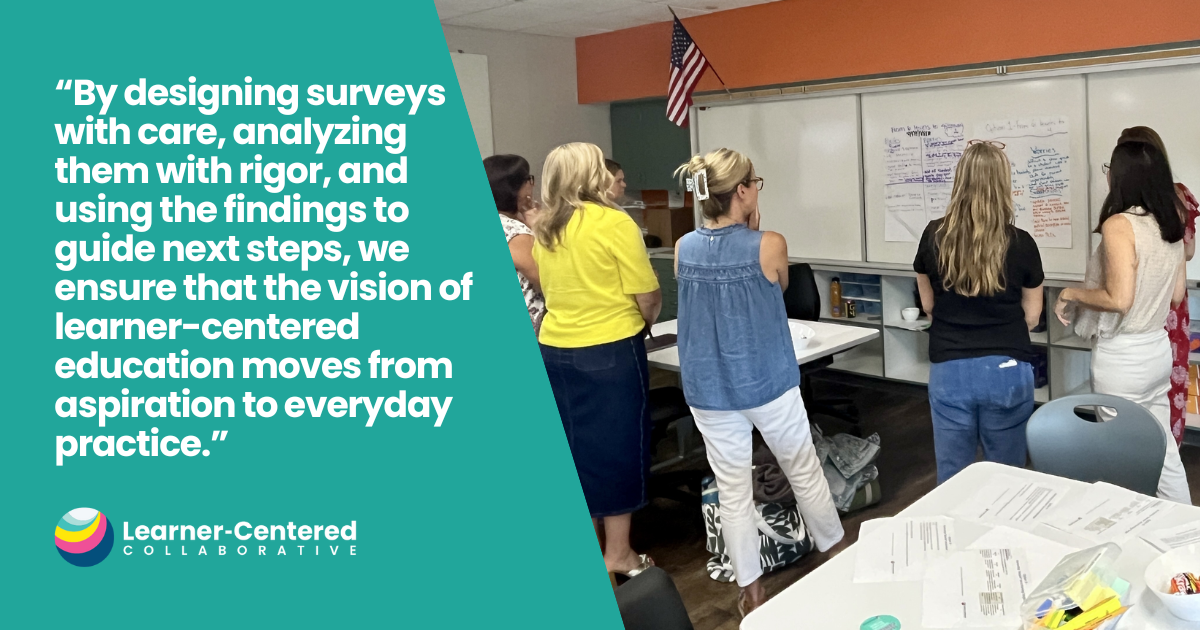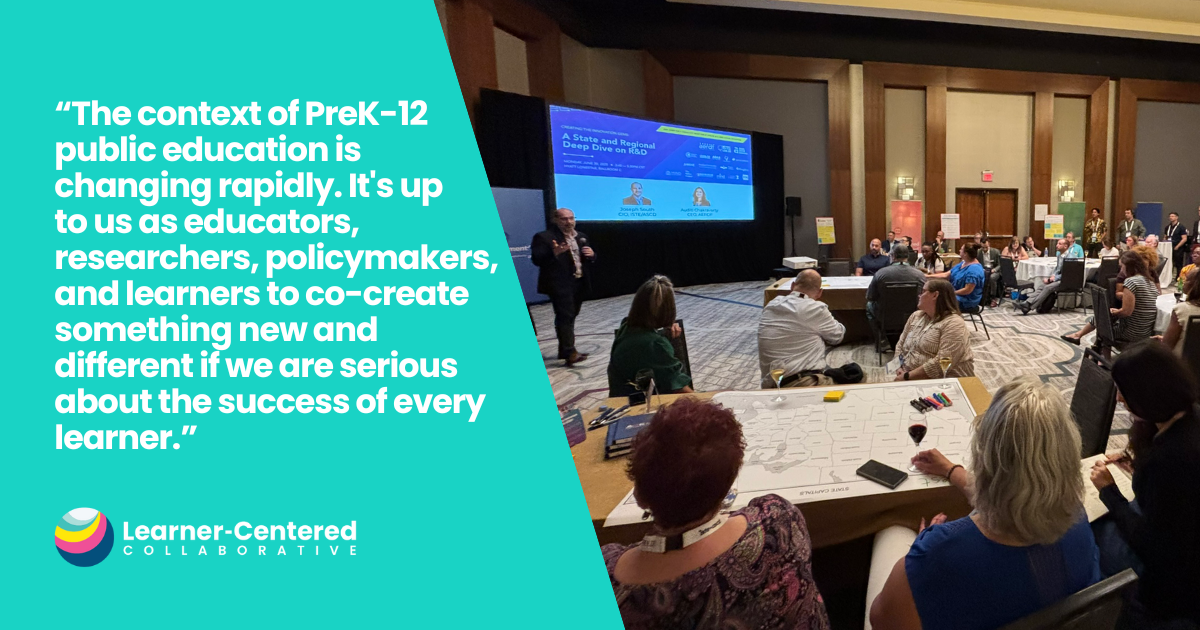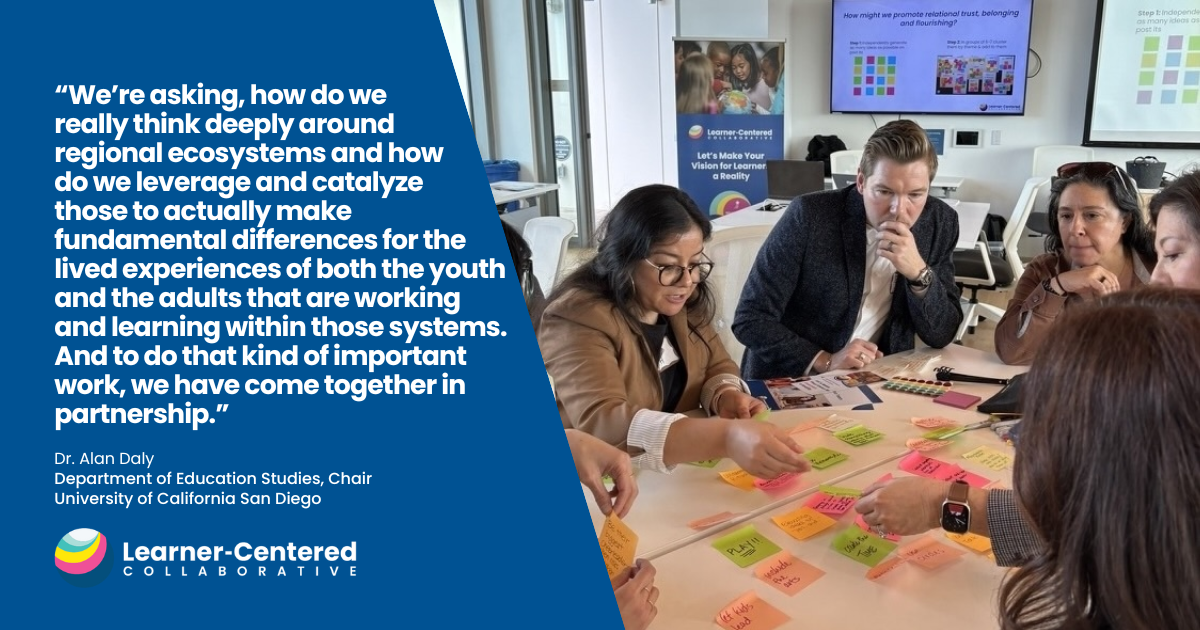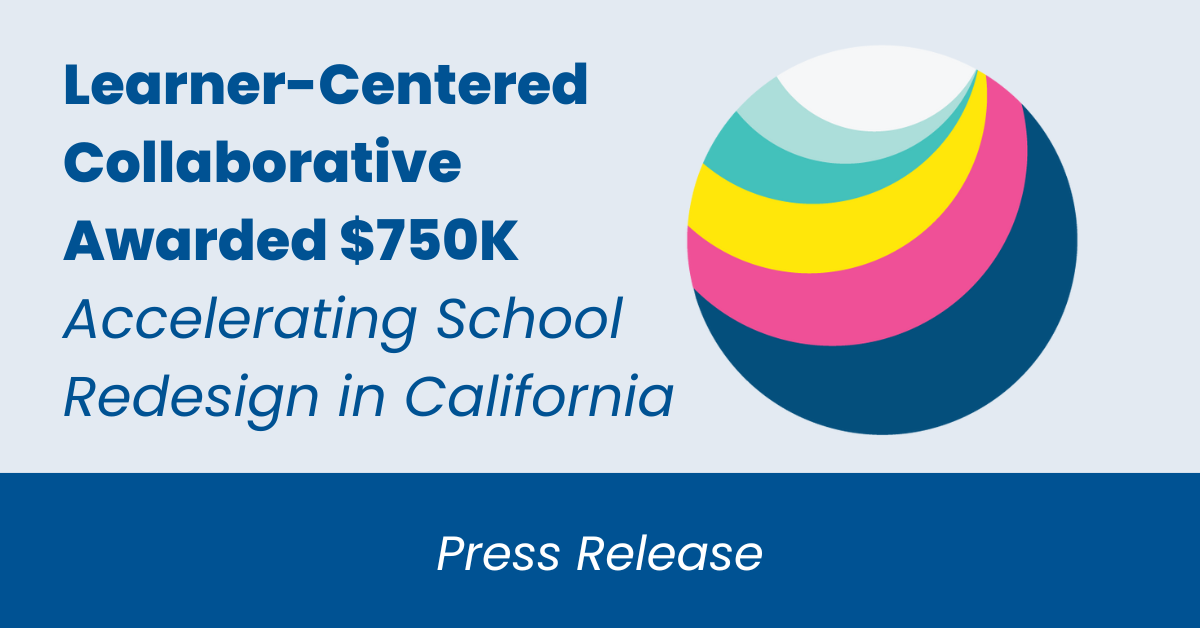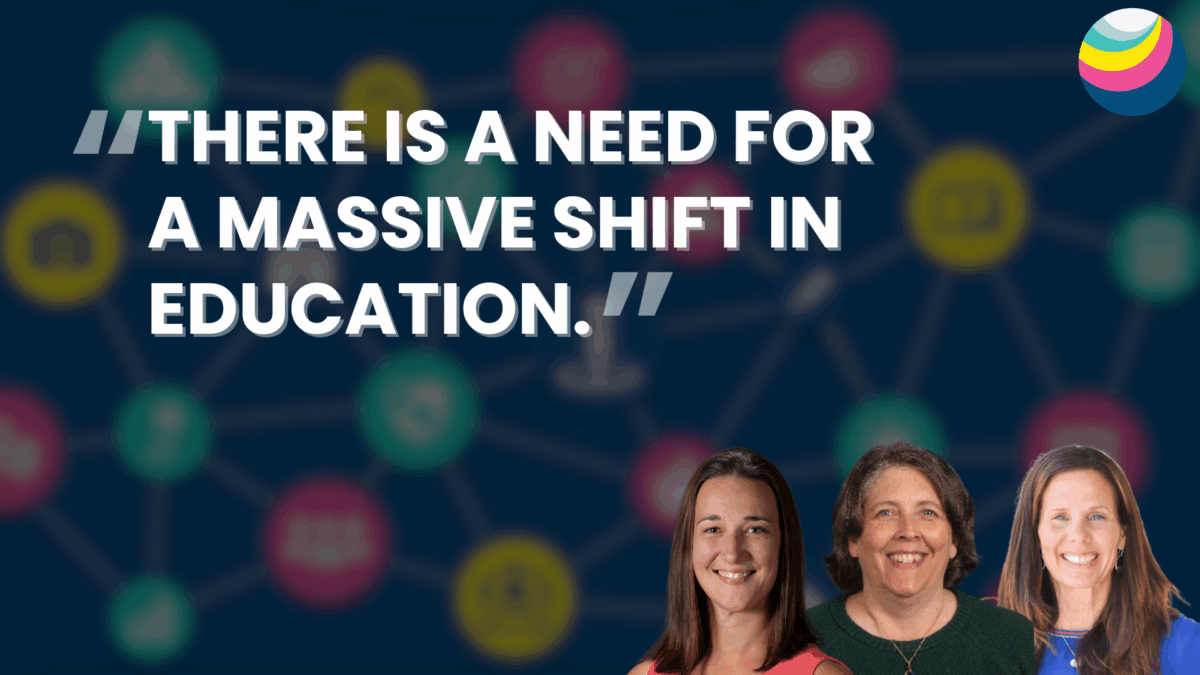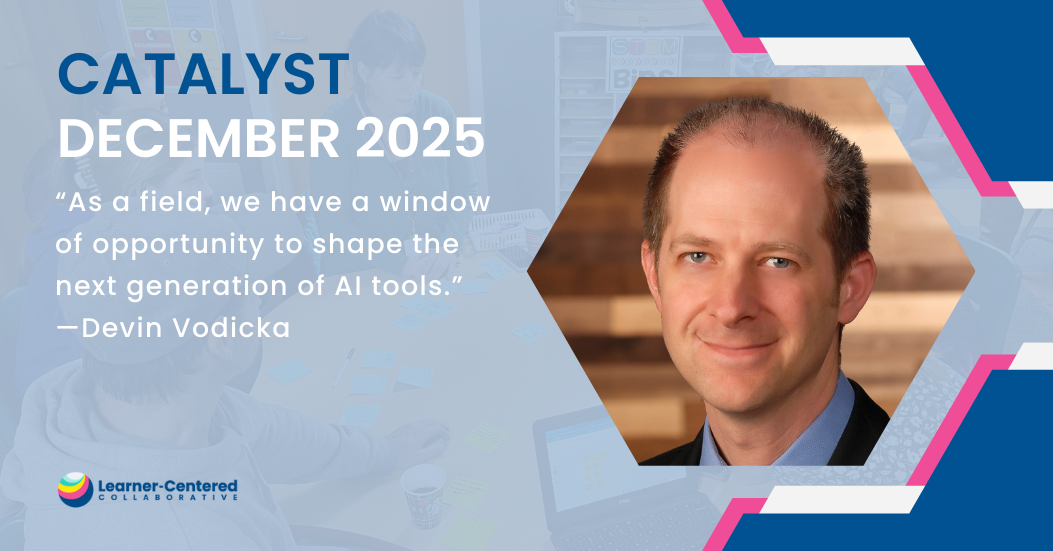Leading at the Edge: Navigating Uncertainty With a Local R&D Strategy
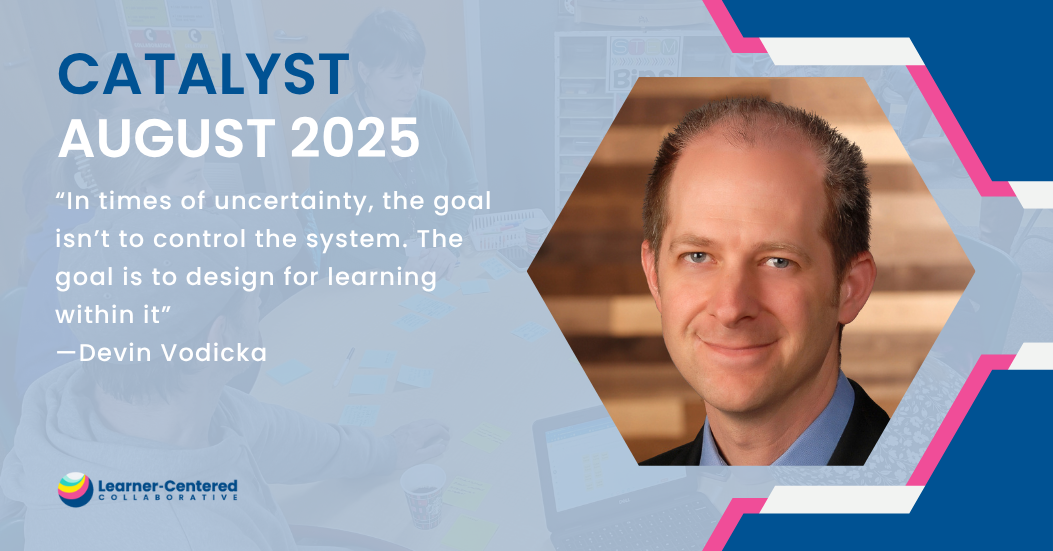
We are living at the “edge of chaos.”
It’s a phrase coined by chaos theory physicist Norman Packard, and one that feels right at home for educators today. Artificial intelligence is accelerating change. Public trust in education continues to dip. And funding, data, and policy supports that once anchored decision-making have shifted or entirely vanished.
This moment can feel unsettling, but it is also a generational opportunity. The edge of chaos is where rapid evolution can take place.
If we choose to evolve, we can see AI as an opportunity to support learner-centered change. Examining the public trust data, we notice an interesting story: parents have significantly more faith in their local education system than in what they believe is happening nationally.
In the wake of eroding federal institutional systems, we are being called to invent something new at the local level. One approach to the “something new” is a local research and development (R&D) strategy built for this volatile, uncertain, complex, ambiguous (VUCA) moment.
Redefining R&D: From Lab Coats to Learning Cycles
The phrase “research and development” conjures up images of scientists in white coats running experiments behind closed doors. But in education, the lab is the classroom, staff room, district office, and community-based learning environments.
At Learner-Centered Collaborative, we think of R&D in education as a continuous, collaborative process of learning our way into better systems—grounded in evidence, guided by purpose, and centered on the lived experiences of learners and educators.
We often reference Myron Rogers’ insight that “the process you use determines the future you get.” In that spirit, we see R&D as an opportunity to model the kind of learning ecosystem we want to grow—one where curiosity, collaboration, and continuous improvement are the norm.
Read More: Can Regional Innovation Hubs Create a More Promising Future for K-12 Education?
R&D is how we uncover what’s working, adapt when it’s not, and evolve in real time. It is less about producing papers and more about creating the conditions where every learner can thrive.
Local R&D lives in feedback cycles that help teams test ideas and adjust in real time. It emerges when student work and voice become central to decision-making. And it spreads when educators are empowered to implement and investigate.
The magic happens when this work is embedded in how a district learns—whether it’s piloting a new Portrait of a Learner, redesigning assessment in a single classroom, or shifting professional learning from sit-and-get to co-creation. The emphasis isn’t perfection. It’s progress.
Leading Through Uncertainty: Design for Learning, Not Control
Recently, while visiting family in Grass Valley, I hiked a series of beautiful trails through the foothills. As we walked, we began imagining new paths that might be carved into the land. A neighbor, who had spent years blazing trails himself, shared a parable that has stayed with me:
In a remote village, a young woman named Nia set out for water just as night fell. The path was dark and unfamiliar. Sensing her fear, an elder handed her a small oil lamp and said, “This won’t show you the whole way—but it will reveal the next few steps.” Guided by that limited light, Nia found her way safely—one step at a time.
That image is a powerful one for today’s education leaders. We can’t see the whole path, but we are responsible for taking the next few steps with integrity, with care, and with our learners at the center.
Read More: Purpose, Participation, and Feedback: What it Takes to be a Learner-Centered Leader
In times of uncertainty, the goal isn’t to control the system. The goal is to design for learning within it. So, where do we begin?
- Identify short-term metrics of progress — Instead of waiting for year-end data, define what early signs of learning, connection, or improvement look like. Monitor them closely and collaboratively. At this stage, there is no such thing as a “bad” metric. We’re simply seeing what’s true right now.
- Use feedback loops — Establish routines where students, educators, and families can reflect on what’s working and what’s not. Let that insight shape what comes next.
- Run small tests of change — Pilot a new strategy with one class or one grade. Learn quickly. Iterate. Expand thoughtfully.
- Celebrate visible wins — Progress fuels momentum. Make small successes visible and tie them back to your shared purpose. Celebrating learning builds belief.
These steps are how we build local R&D capacity—not just through systems, but through habits of mind and culture.
It’s Ours to Build
No one is coming to build the future of education for us. That responsibility and opportunity belong to those closest to the work.
This isn’t about doing more. It’s about doing differently. When we lead with curiosity, courage, and collective care, we illuminate the path a few steps at a time. And that’s enough.
Because the future doesn’t need to be fully visible to be worth walking toward.
At Learner-Centered Collaborative, we support schools and districts with co-designing learner-centered strategies, building educator and leadership capacity, and measuring what matters. Ready to see how we can support you and your learning community? Connect with us here.

